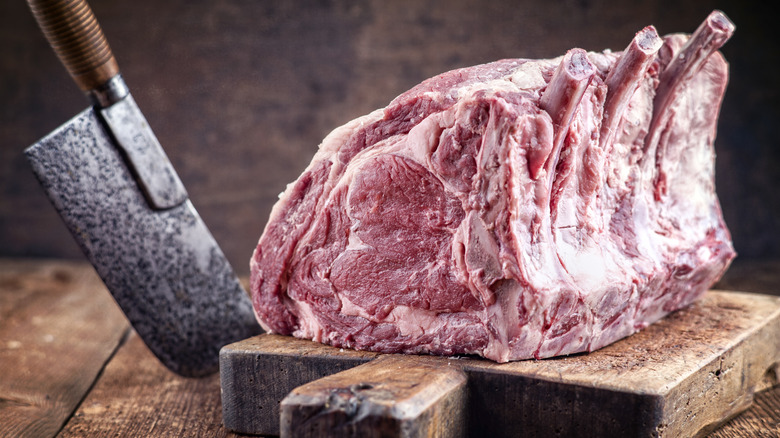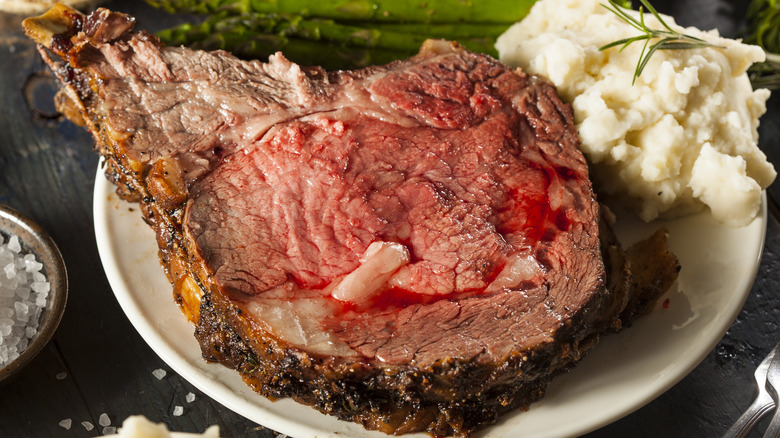This Is The Best Rib Roast Method, According To Alex Guarnaschelli
Few entrées say "special occasion" like prime rib. Grand, dramatic, and incredibly tender, with an exterior "crackling with salt and fat," (via Serious Eats), once sliced, the slices reveal a rosy, juicy center "eye" surrounded by a marbled muscle and a layer of rich, flavor-infusing fat. For meat lovers, it's a thing of unparalleled beauty and flavor.
According to Kitchn, prime rib comes from the "primal rib" section of the steer. (The ribeye steaks you probably love are the centers of these cross-sections.) There are six prime ribs — ribs six through 12 — and a whole prime rib weighs about 12 to 16 pounds. These ribs run along the back of the animal, and because these muscles get little use, the meat is exceptionally tender.
Respected chef and television personality Alex Guarnaschelli was recently asked via Twitter what the best method was for preparing prime rib. Guarnaschelli referred to the technique developed by J. Kenji López-Alt, chief culinary consultant of Serious Eats and author of "The Food Lab," in which he shares the science of cooking with readers. López-Alt advises cooks to start by buying a bone-in, prime-grade prime rib that's been dry-aged. Dry aging lends, according to López-Alt, a complex and somewhat "funky" (in a good way) flavor to the meat. López-Alt starts by seasoning his prime rib generously with salt and pepper and putting it in the refrigerator to rest uncovered at least overnight, or up to four days.
Prime rib is an all-day process
López-Alt starts his prime rib at a very low temperature: He roasts it at just 200 degrees until a meat thermometer inserted into its center registers 125 degrees (via Serious Eats). Not surprisingly, at 200 degrees, it takes about four to five hours to reach this relatively low level of near-doneness. López-Alt then removes it from the oven, tents it lightly with aluminum foil and lets it rest for a surprising 30 to 90 minutes. Ten minutes before serving the masterpiece, López-Alt takes off the foil and puts it back into an extremely hot oven (500 degrees), and roasts it until it's crisp and beautifully brown. This part takes only about 10 minutes. Unlike most meats, there's no resting at this point; López-Alt carves and serves it right away.
Prime rib is expensive. According to Cook's Illustrated, for prime-grade prime rib, you should expect to pay $17 a pound. Choice-grade prime rib is also excellent, but slightly less expensive: around $13 a pound. For dry-aging, however, which adds additional tenderness and flavor, expect to pay $2 to $3 per pound more.
Some final advice from Cook's Illustrated: Butchers often prepare two distinct cuts of prime rib. Ribs 10 through 12, the "loin end" is more coveted because it's less fatty, although ribs 6 through 9 are also excellent. Planning a special meal? It's hard to go wrong with prime rib.

